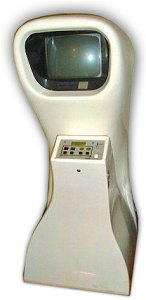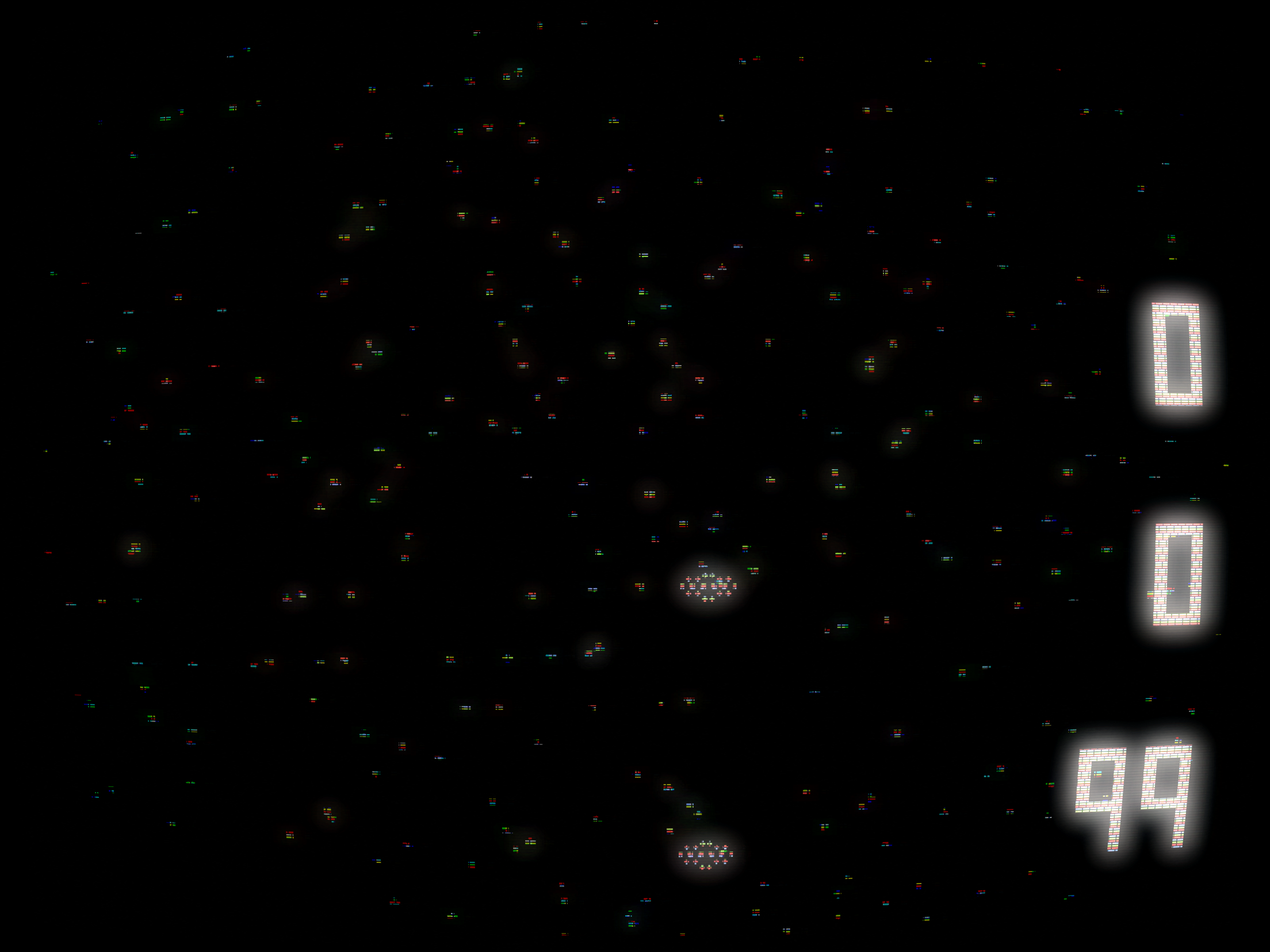 The Game: Two ships are locked in deadly deep-space combat, firing interplanetary ordnance at each other. Whoever survives the most confrontations within a set amount of time is the victor. In the game’s one-player variation, the machine controls one ship, and a two-player version was also made. (Nutting & Associates, 1971)
The Game: Two ships are locked in deadly deep-space combat, firing interplanetary ordnance at each other. Whoever survives the most confrontations within a set amount of time is the victor. In the game’s one-player variation, the machine controls one ship, and a two-player version was also made. (Nutting & Associates, 1971)
Memories: To go all the way back to the beginning of video games in the arcade is to go back to Computer Space – which is also arguably the first arcade flop.
The idea behind the game wasn’t exactly new – it was almost a decade old, in fact. Steve Russell’s college mainframe favorite Spacewar! had captured the attention of a college student named Nolan Bushnell. Having served his own apprenticeship as a carnival barker in his younger years, Bushnell was sure he could sell anyone on entertainment, and he knew a potentially exciting new medium for that entertainment when he saw one.

Soylent Green scenes ©1972 MGM
Bushnell was just short of prophetic, and thrifty as well – he abandoned his early idea, to bring the excitement of Spacewar! on the then-enormously-expensive PDP-11 mainframe, in favor of simplicity and lower cost. He implemented a somewhat stripped-down Spacewar! entirely in solid-state logic circuitry, with no central processor governing the proceedings. An ordinary B&W TV provided the display. The controls were a bit complicated as well – left, right, thrust and fire each had their own button.
Computer Space did, however, set many things in motion: it virtually set the mold for the upright arcade game, for one. Its hooded monitor, backlit marquee and control panel configuration has stuck around to this very day, though one would be hard-pressed to find much resemblance between modern games and the avant-garde sculpted fiberglass casing of Computer Space. There’s never quite been anything like it since.
And there certainly wouldn’t be again where this game’s manufacturer was concerned. When all was said and done, the cost of manufacturing Computer Space outweighed the profits. Nutting & Associates decided to back out of the nascent arcade business, and parted ways with Nolan Bushnell. He didn’t lose his fascination with putting computer games in the arcade, though, and his next creation – this time manufactured by a company he founded with a couple of friends on an initial investment of $250 each – would fare better. It was called Pong.
In the interest of fairness, I’m not rating this game – unlike almost everything I’ve reviewed to date, I haven’t played it in person. The very first production model is owned by video game industry veteran Jerry Jessop, and made a rare appearance at Classic Gaming Expo 2004 in San Jose, but in case you missed that event, there’s still one place where you can see a pristine specimen of Computer Space: in one of the opening scenes of the movie Soylent Green, a completely unaltered Computer Space cabinet is played briefly near the beginning of the movie, and appears later in the background behind Charlton Heston’s character. The movie is set in 2022, but it’s hard enough to find a working Computer Space arcade game in 2004 outside of the above frames from the movie.
However, the story doesn’t end there – a collector claiming to have the original Soylent Green Computer Space machine, the only one Nutting & Associates made with a white casing (specifically at the request of the movie’s producers), surfaced in 2007. Was it the real deal? Look at the pictures for yourself and decide.

